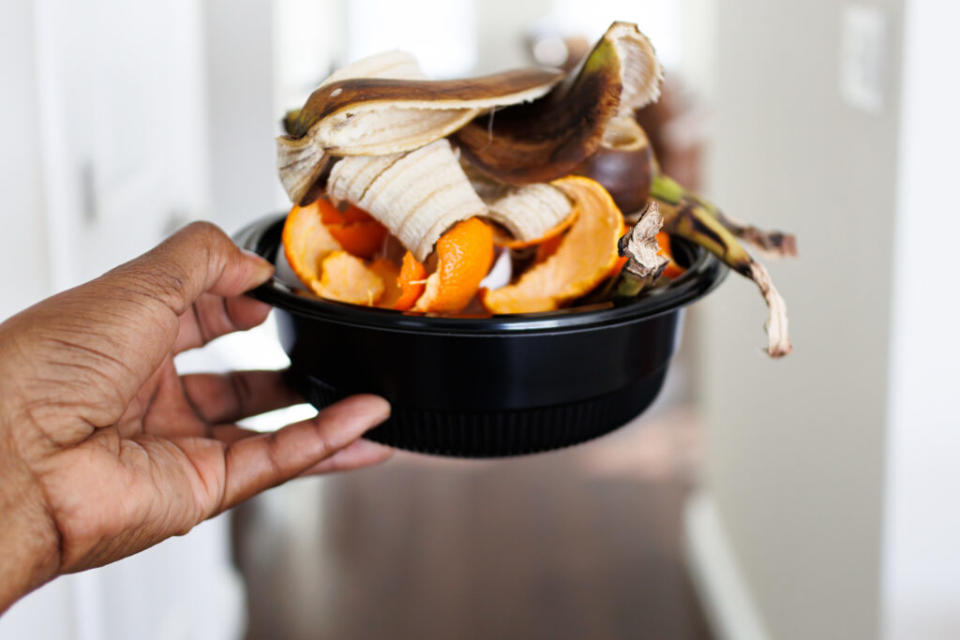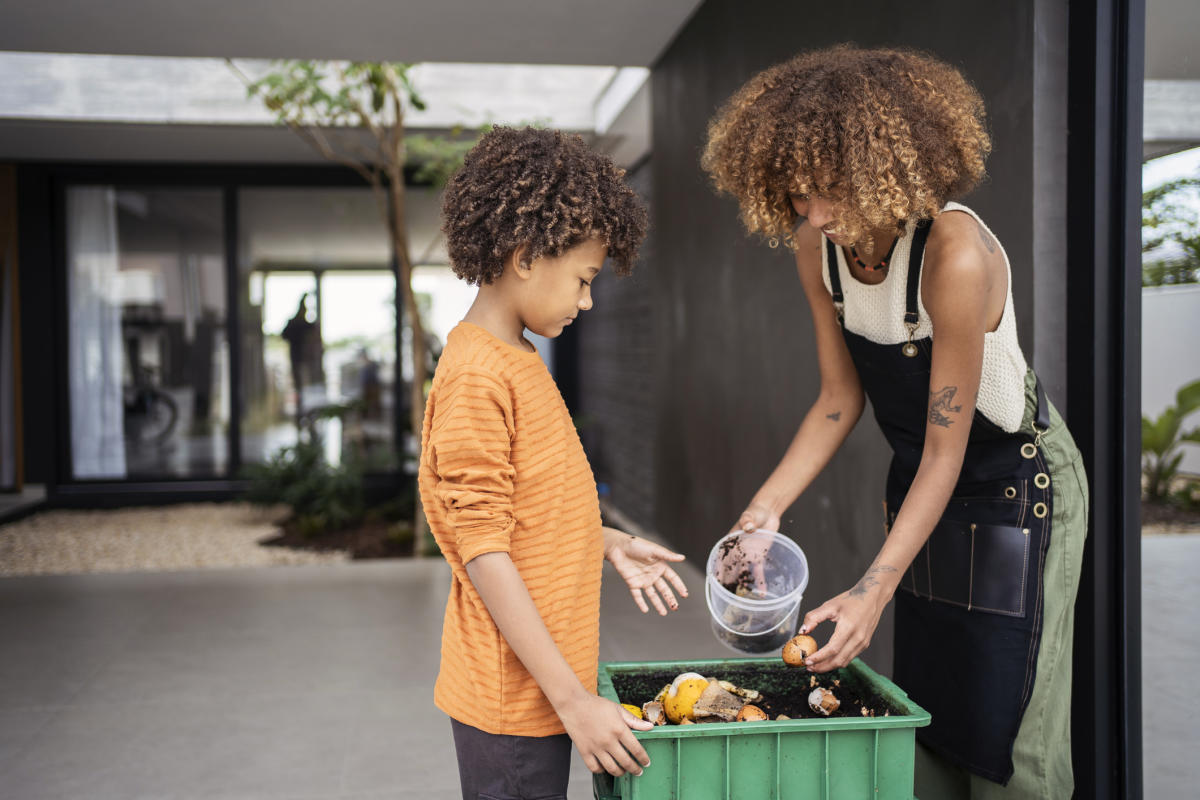The United States has a simmering food waste problem that goes largely unaddressed. According to the nonprofit ReFED, 91 million tons of food—half of it still edible—were thrown away in 2021. Only 2% was donated, while food insecurity is rampant in poor communities across the country.
The problem of food waste is so serious that in 2015 the US Environmental Protection Agency (EPA) announced its strategy to halve food waste and loss by 2030. Nevertheless, per capita food waste continues to increase.
As a sign of recognition of the problem, the Biden administration launched the National Strategy to Reduce Food Loss and Waste and Recycle Organics in June 2024. “Every year, too much food produced in the United States ends up in landfills instead of on dinner tables. This harms our economy by increasing food costs and contributing to climate pollution,” says EPA Administrator Michael S. Regan.
One of the strategies proposed in the National Strategy is composting to combat food waste.


Environmental impacts of food waste
In the United States, food waste makes up the largest portion of landfills, accounting for 30-40% of all food and nearly a quarter of all garbage. The United States leads the world in food waste and loss, with one-fifth of food still lost on the farm.
Food waste is associated with enormous amounts of fresh water used in production and transportation from farm to table. Approximately 21-33% of blue (irrigation) water used on U.S. farms is wasted this way each year, equivalent to 5.9 trillion gallons.
Food waste and loss in America accounts for approximately 170 million tons of carbon dioxide equivalent (CO2e) emissions annually from the combustion of fossil fuels used for cultivation, harvesting, processing and transportation. Globally, about 8% of all human-caused greenhouse gas emissions are due to food loss and waste.
In addition, rotting food in landfills generates massive amounts of methane, a powerful greenhouse gas that drives the climate crisis worse than carbon dioxide. In fact, the U.S. Environmental Protection Agency (EPA) has calculated that for every 1,000 tons of food waste in landfills, about 34 tons of methane emissions are generated. That’s 58% of all the methane emitted by landfills.
Food insecurity and food waste
The scale of food waste in the United States comes in a country where a significant portion of citizens suffer from chronic food insecurity—that is, lack of access to affordable, nutritious food. The EPA estimates that this uneaten food contains enough calories to feed 150 million people annually.
According to the Food Research & Action Center, one in eight households (12.8 percent) of approximately 44.2 million Americans are food insecure. More than one in six households with children (17.3 percent) are food insecure, a 40% increase from 2021. Black (22.4%) and Latino (20.8%) households are disproportionately affected by food insecurity, more than twice the rate of white non-Latino households (9.3%) experiencing food insecurity.
The nonprofit Feeding America offers an interactive map on food insecurity. The group’s interactive dashboard examines the connection between racism and food insecurity.
Food waste laws in the United States
So far, only a few states and municipalities have a patchwork of laws to prevent food waste and loss. California, Connecticut, Massachusetts, New York and Rhode Island have laws limiting the amount of food waste sent to landfills.
In 2012, Vermont passed a universal recycling law that completely bans food waste disposal in landfills starting in 2019. As a result of this legislative action, food donations across the state have nearly tripled, according to the Vermont Foodbank.
States considering programs to fund private composting and organic waste collection programs to keep food waste out of landfills include California, Colorado and Massachusetts.
Complementing the above national plan to address food waste and loss are two EPA programs with funding from the bipartisan infrastructure bill: the Solid Waste Infrastructure for Recycling Program and the Recycling Education and Outreach grants. These programs advance the President’s Justice40 initiative, which is designed to benefit disadvantaged communities. Over $83 million of these funds support 72 projects, including organics recycling and composting, needed to mitigate the impacts of the climate crisis.
Composting to combat food waste
If your state or municipality has food waste disposal or drop-off facilities that can convert food waste into energy or fertile soil, there are several compost storage devices available for your kitchen counter or freezer.


If you have the space and motivation, you can compost your own food scraps in a compost pile on your patio or in a pile in the backyard (fenced or not).
What is composting?
Composting is the decomposition of organic materials such as grass clippings, leaves and food scraps by microbes in the presence of oxygen (aerobic). This process turns food waste into a rich soil conditioner that can be added to the garden, even to containers or windowsills.
Vermicomposting (with worms) is another type of composting that you can do at home in a multi-tray box available from garden stores. It is a closed, hygienic process that produces worm castings that are great for improving soil. Each time you compost, methane production is avoided.
Based on my personal gardening experience, I have come to the conclusion that the best compost is produced when organic materials:
-
In a ratio of 2:1 – that is, twice as much brown materials (dry leaves, wood chips, etc.) as green materials (food waste, grass clippings, etc.)
-
Cut or tear into small pieces
-
Kept moist (not too wet)
-
Ventilate by turning the pile weekly (max. 3 feet)
-
At 131-160℉ (internal temperature) for several days before turning
Depending on the time of year and environmental conditions, this process can take a month to a year to produce the dark, earthy-smelling, crumbly soil known as compost.
Tips for composting at home
To make composting at home more successful, here are some tips:
-
Acceptable food waste includes: peels, skins, ends, cores, rinds, etc. of vegetables and fruits, coffee grounds, used tea leaves in compostable bags (not plastic), paper filters, eggshells
-
Avoid oils, dairy products, meat and bones
-
Bury green material under brown material in your pile to avoid fruit flies
-
A strong, sour smell means the compost has not fully cured, so wait before adding it to your garden or flower pots.
-
An enclosed outdoor compost pile will keep rodents at bay, but there is a risk of it drying out, so watering is essential.

